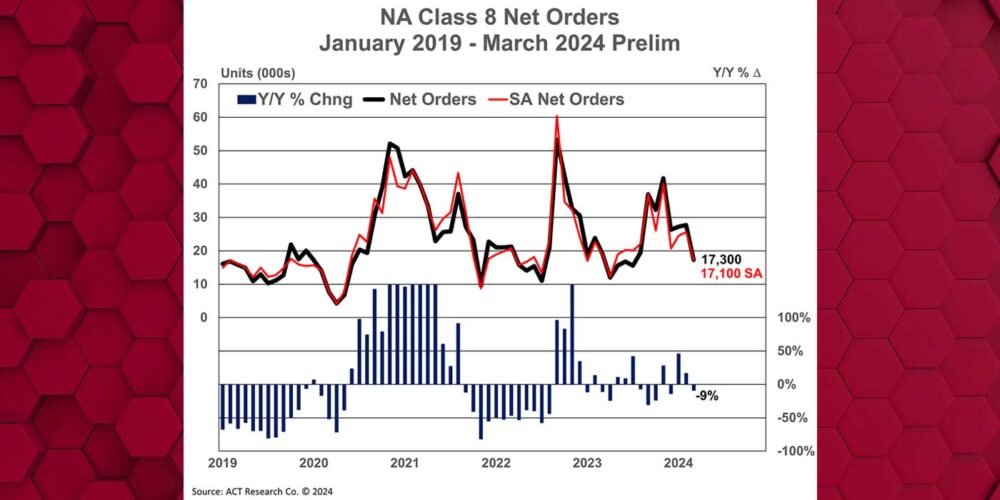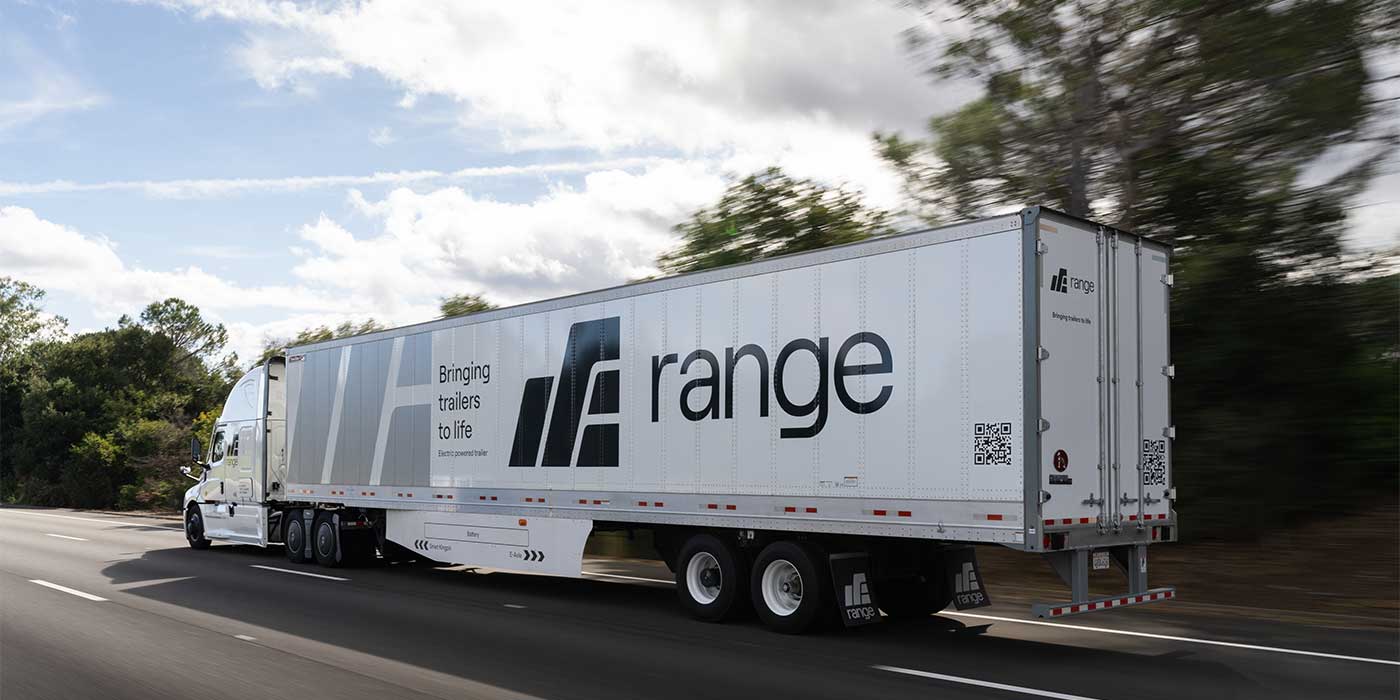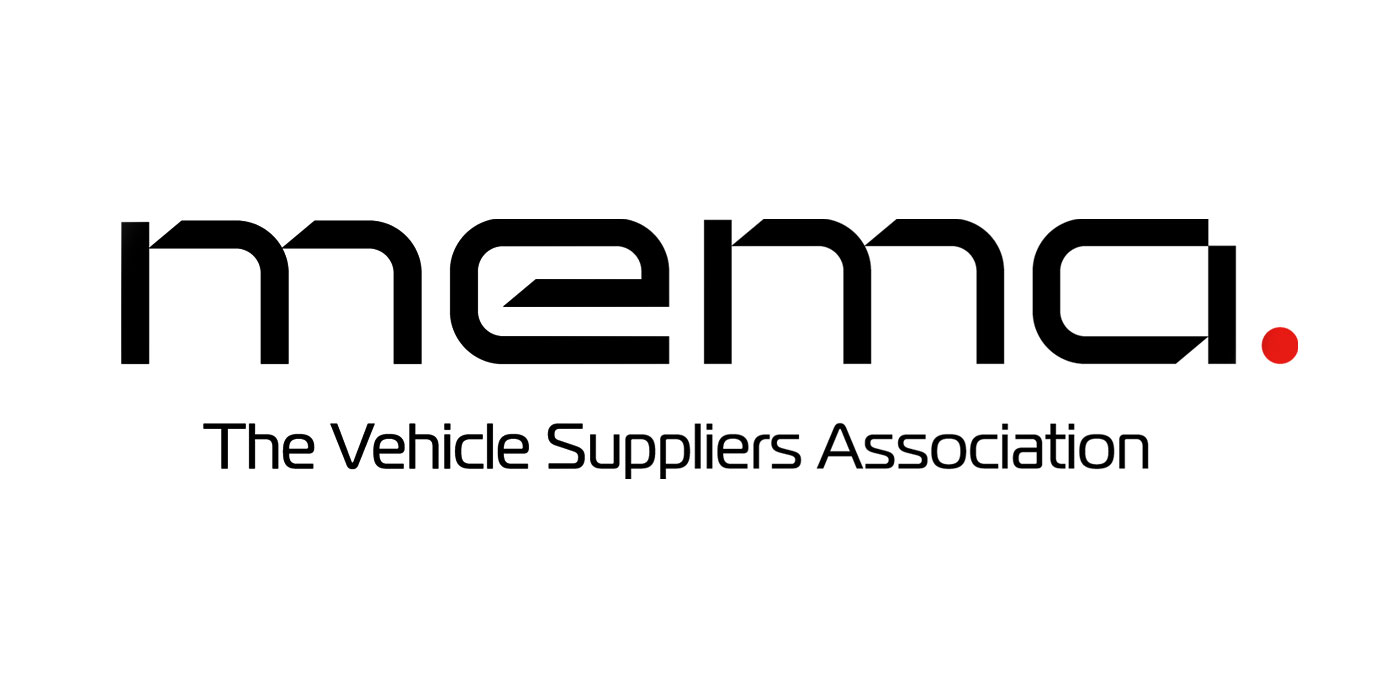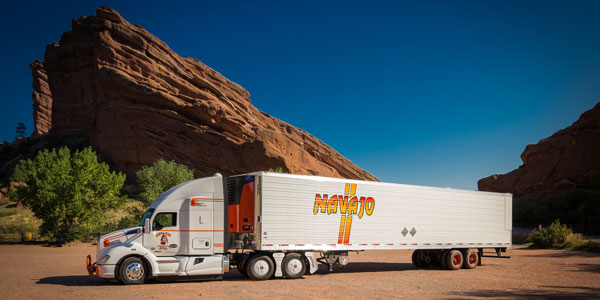
“There’s everything to gain by listening.” In one sense, it’s just that simple for Don Digby, Jr., president of Navajo Express. And Digby, who now heads up the third generation, family-owned business, means it.
“People talk about paying attention to customers and drivers, but few really do it,” Digby says. “Every day, we focus on hearing how our resources, management practices, operations and customer relationships can continue to ensure our growth and success in a highly competitive business.”
Headquartered in Denver, Navajo Express provides dedicated, dry and refrigerated, specialized, intermodal and logistics services across the country. The carrier operates from facilities in Colorado, Utah, Arizona, Wisconsin, Arkansas and Georgia with a fleet of approximately 900 tractors and 2,250 trailers.
“There’s nothing we can’t specify and have built, and our fleet has evolved continually over the years,” Digby says. “For example, two years ago we started looking for ways to reduce the weight of our tractors and trailers so we can offer maximum payload capacity. But we only specify equipment after considering the needs that our customers dictate to us. We also regularly share our thought process and customer opportunities with OEMs.”
Today, the Navajo Express fleet is made up of several different makes and models, but a majority of the equipment consists of Kenworth tractors and Utility trailers. The average age for trucks in the fleet is 2.5 years, and for trailers, it is four years.
About half of the trailers at Navajo Express are 53-ft. reefers and there are 53-ft. dry vans, 57-ft. dry and refrigerated units and some 53- and 57-ft. heavy haul tri-axle models. In addition, 48-ft. reefers are used in super sets of 48- and 42-ft. combinations, and as Rocky Mountain Doubles consisting of 48- and 28-ft. trailers.
With its array of equipment and experience, Navajo Express has a well-deserved reputation for providing effective services in several market segments. At the same time, the company is known for its driver-inclusive vision that is providing benefits for employees, the carrier and its customers.
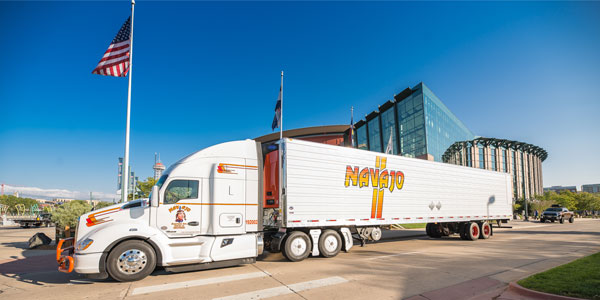
Miles, money, home—and always with respect
“A key part of our reputation is our focus on factors that matter to customers and drivers,” Digby says. “We work constantly to listen to them, and recognize how every decision we make will impact transportation costs for shippers and quality of life for our drivers, as well as their families.
“For drivers, we’ve learned that it’s about much more than pay rates,” Digby continues. “With our equipment, we can maximize their productivity. With our network of facilities, we can run like a regional operation and maximize their home time.
“Our growing, dedicated business is also more than a means of meeting shippers’ needs,” Digby adds. “In those operations, drivers can be home every night, or every two days in most cases.”
Digby notes that Navajo’s efforts are benefitting the company in lower recruiting costs. “Our goal is always to have no driver turnover; but as that is unrealistic, we use an emphasis on relationships, operating practices and equipment to facilitate a positive experience for drivers,” he says.
“On a weekly basis, our recruiting success is up 20%,” Digby adds. “Part of the reason for that is because our recruiters are former drivers who understand what drivers need and can effectively explain how Navajo Express can be a great place to work.”
Navajo Express also works hard to offer equipment that drivers find favorable. For example, there are DriveCam systems for their protection if an incident occurs. Currently undergoing evaluation are in-cab Wi-Fi systems that Digby says are part of an effort to find creative solutions for providing drivers with the same creature comforts they have at home.
About 80% of the Navajo Express fleet is outfitted with EpicVue in-cab satellite TV systems. “EpicVue is a part of our comprehensive effort to provide drivers with amenities so they’re as comfortable on the road as they are at home,” Digby says. “It’s also proven to help lower recruiting costs by improving retention when a driver is considering leaving.”
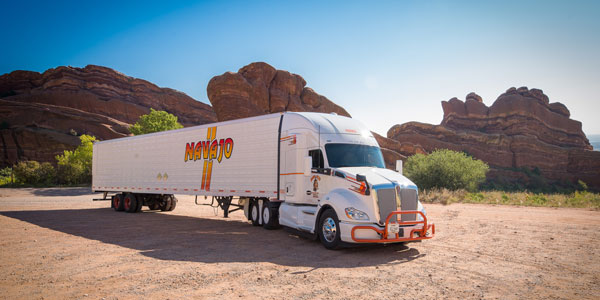
Doing the right thing
Part of the culture of driver respect at Navajo Express is built on a strong foundation of safety. “We want to make sure we’re continuing to raise safety standards, not just here at Navajo but industry-wide as well, because we should all be doing the right thing,” Digby says. “Safety is a core value that’s part of the structure of our entire operation.”
In 2014, Navajo began equipping tractors with Bendix Wingman Advanced active cruise control, braking and collision mitigation technology. For its 2018 and 2019 trucks, it has specified Bendix Wingman Fusion driver assistance systems to help focus on crash causes. Beginning with the 2019 model year, new trucks and tractors in the fleet are also being spec’ed with Bendix ADB22X air disc brakes.
“We’ve received positive feedback from our drivers about these systems because they help them sharpen their habits and potentially avoid rear-end collisions,” Digby relates. “The data they generate also lets us recognize unsafe situations and address them quickly.
“For Navajo, the payback is in reduced accident rates and costs,” Digby says. “Based on four years of data back to when we started using Wingman, we’ve seen a 77% decrease in rear-end collisions.”
Navajo Express also recognizes driver safety achievements with monthly and annual awards, including customized trucks for million-mile safe drivers. Among 1,000 company drivers, there are approximately 30 drivers who are million milers and two drivers who have driven safely for Navajo for more than three million miles.
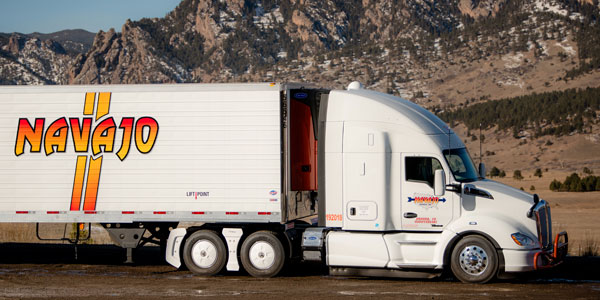
Lowering CPM
Supporting drivers at Navajo Express as well are four company shops and 60 technicians, maintenance services supplied by Ryder and Penske at remote locations and a relationship with MHC Kenworth dealerships for warranty work. “That combination gives us flexibility, and it’s helped lower our maintenance cost from 16 cents to under ten cents per mile,” Digby reports.
“Having alternatives also means we don’t have to take drivers out of lanes and use available hours of service for maintenance,” Digby continues. “At the same time, we use mapping solutions, Blue Tree Systems tracking on tractors and ORBCOMM tracking on trailers, and Trimble’s NetWise load optimization software to evaluate freight hauling needs, capacity, dwell time and other factors so we can offer enhanced services and cost savings.”
For Digby, it is that simple: success at Navajo Express is measured by customer and driver satisfaction. The company’s 98.5% on-time delivery record speaks for itself, he notes, and it’s all driven by the support of a hard-working team that delivers creative and reliable services and solutions.





